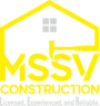A house fire can turn life upside down in minutes. It destroys property, leaves behind thick smoke, and fills the air with toxic soot. The damage does not stop when the flames go out. Fire damage restoration in Denver, CO helps homeowners recover by cleaning, repairing, and rebuilding damaged areas.
Cleaning up after a fire takes time and expertise. Professionals know how to remove smoke, clear debris, and rebuild damaged structures. They make sure homes are safe to live in again. The sooner restoration begins, the better the chances of saving the home.
Why Fire Damage Restoration is Important?
A fire-damaged home is dangerous. If the structure is weak, the house could even collapse. Water damage from putting out the fire can cause mold and rot.
Restoration services make sure all these problems are fixed. Here’s why fire damage restoration services are necessary:
- Prevents Further Damage – Soot eats away at walls, furniture, and appliances. Quick cleaning stops permanent damage.
- Removes Harmful Toxins – Smoke contains chemicals that can cause serious health issues. Professional cleaning removes these toxins.
- Restores Air Quality – Smoke gets trapped in vents and fabrics. Deep cleaning helps remove strong odors and harmful particles.
- Makes the Home Safe Again – Fire weakens structures. Repairs ensure walls, ceilings, and floors are strong and secure.
- Helps with Insurance Claims – Restoration teams document damage to help homeowners with their insurance claims.
Steps in Fire Damage Restoration
1. Fire Damage Inspection
Experts first check how much damage the fire has caused. They look at:
- Walls, ceilings, and floors – To see if they are strong or need repairs.
• Smoke and soot levels – To check if they have spread through air ducts and furniture.
• Water damage – To prevent mold and mildew from growing.
This inspection helps in making a detailed plan for repairs and cleaning.
2. Removing Debris and Soot
After an inspection, the cleanup begins. This involves:
- Clearing out burned materials – Broken furniture, damaged wood, and debris are removed.
• Deep cleaning walls and ceilings – Special cleaning agents are used to get rid of soot and stains.
• Vacuuming fine smoke particles – Smoke settles on surfaces and must be cleaned with high-powered vacuums.
Removing soot early stops it from staining walls permanently.
3. Smoke and Odor Removal
Smoke smell lingers for weeks if not treated. Experts use:
- Air purifiers and filters – To clean the air and remove fine particles.
• Thermal fogging – A process that neutralizes strong smoke smells.
• Special cleaning sponges – Used on walls, ceilings, and furniture to lift smoke stains.
This step is important for restoring a fresh and clean indoor environment.
Rebuilding After Fire Damage
After cleanup, restoration experts begin repairing the damaged parts of the home.
Structural Repairs
- Rebuilding walls, floors, and ceilings – If they were damaged in the fire.
• Fixing roofs – To stop leaks and strengthen the home.
• Replacing damaged wiring and plumbing – Fires can melt electrical wires and pipes, which must be repaired.
Mold Prevention and Water Damage Repair
Firefighters use water to put out fires, but that water soaks into walls and floors. If left untreated, mold can grow. Restoration teams:
- Dry water-damaged areas – Using large fans and dehumidifiers.
• Check for mold growth – And remove any signs of mold.
• Replace soaked insulation – Wet insulation can cause more damage over time.
Mold spreads fast. Drying the home completely prevents future health risks.
Air Quality and Smoke Removal
Smoke can be more harmful than fire itself. Even after cleaning, small smoke particles stay in the air. Fire damage restoration services ensure:
- Air vents and filters are cleaned – To stop smoke from spreading to other rooms.
• Walls are repainted with protective coatings – This helps trap leftover smoke particles.
• Ozone treatments remove stubborn odors – These treatments break down smoke molecules.
Breathing clean air is important after a fire. These steps make sure the home smells fresh and is safe to live in again.
How to Reduce the Risk of Fire Damage?
While restoration services help after a fire, it is better to prevent fires from happening. Here are some safety tips:
- Install smoke detectors – Check batteries every six months to make sure they work.
• Keep fire extinguishers handy – Have them in the kitchen, garage, and near fireplaces.
• Do not overload electrical circuits – Too many devices in one outlet can cause electrical fires.
• Turn off heating appliances when not in use – Stoves, heaters, and candles should never be left unattended.
• Have an escape plan – Teach family members where to go and what to do in case of a fire.
Fire leaves behind more than just burned walls. Restoration experts handle soot removal, smoke cleanup, water drying, and structural repairs to make homes safe again. In Denver, CO, fire restoration services like those offered by MSSV Construction help homeowners recover quickly by cleaning up damage, rebuilding structures, and improving air quality.
Fire recovery is not just about rebuilding structures—it’s about restoring safety, comfort, and peace of mind.


